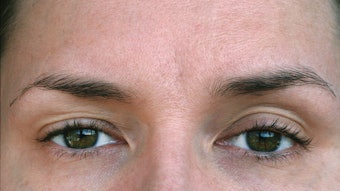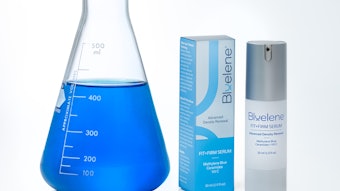
Most skin care and beauty standards exist for people of Caucasian descent with light-toned skin. Like every industry that is modernizing, the aesthetics and skin care industry recognizes the need to consider the needs of patients with darker skin tones. When treating common concerns like acne, hyperpigmentation and anti-aging in skin of color, aesthetics requires a different approach. Being attuned to your patient’s needs puts you in the position of a trusted advisor while addressing their aesthetic concerns and goals. Here are the latest advances and insights into aesthetic trends and specific treatment needs for skin of color.
The Difference is in the Details: Skin Tone Matters
Recent insights provided by Seemal Desai, M.D., dermatologist at Innovative Dermatology in Plano, TX, mention the need to assess patients with darker skin carefully and that there is no “one-size-fits-all” for skin protection. When referring to skin tones, there is a wide range of groups from African descent (including Africans, African Americans and Caribbean Black individuals), Asian and Pacific Islanders, Latinos, Middle Easterners and more that have higher degrees of melanin.
The Fitzpatrick skin tone scale is a good start to determining the amount of melanin in various skin types. Because many patients and practitioners overlook full skin checks in darker skin toned patients, when skin cancer does occur, the status can be much worse. It is more likely to be in unexposed areas of the body1, such as the soles of the feet, nail beds or mucous membranes. As with all cancers, early diagnosis is key to survival, especially since the 5-year survival rate for melanoma in Black people is 65%2, compared to 91% for white people. Protecting skin of all colors is de rigueur for dermatologists, yet many preferred sunscreens leave an unattractive white cast.
Andrew F. Alexis, M.D., Professor of Clinical Dermatology, Weill Cornell School of Medicine in New York, spoke at the ASLMS Conference on the range of issues that affect multiple skin types, in addition to the webcast he presented on the subject for MedEsthetics, Advancing Laser Therapies for Skin of Color Patients, in which he goes into the role advanced lasers like Aerolase's Reverse play in advancing treatments for skin of color patients. “Skin color alone is not an effective predictor of clinical characteristics,” he said. Assisting these patients in education and treatment will garner loyalty and confidence. Based on the level of melanin from the Fitzpatrick skin scale, you’ll need to address their skin concerns appropriately. For example, keloids from extra scar tissue affect people with darker skin tones more. The most common locations affected are the earlobes, chest, back and arms. This along with increased hyperpigmentation from acne or aggressive picking can be addressed with lasers and chemical peels. Special attention, techniques and devices are imperative, and demand has increased among practitioners. Because standard energy-based methods are too strong to use on skin of color and can cause adverse effects, newer modalities have become popular in modern practices.
Evening Skin Tone in Skin of Color Patients
Vitiligo is a burden for patients looking for more even-toned skin. At the 2024 Winter Clinical Hawaii Dermatology Conference, Dr. Desai recommended treatments using liquid nitrogen and/or laser-assisted depigmentation. He provided guidelines for dermatologists when counseling patients with vitiligo on cosmetic procedures. A consensus highlighted the safety of laser hair removal and IPL for stable vitiligo, emphasizing the importance of low settings and cautious use to avoid heat-induced trauma. “Patients with vitiligo should never undergo an ablative laser because that is bound to koebnerize and worsen the disease,” said Dr. Desai. “Try to always do test spots, and if you have any laser or device induced depigmentation, treat very aggressively with the systemic dexamethasone along with the topicals in terms of laser hair removal and IPL. If your disease has been stable for at least a year, it's okay to do laser hair and IPL, with the caveat that laser devices can cause a heat induced trauma to the skin and a theoretical koebnerization.”
He also recognizes patients' hands as a symbol of cultural importance and stressed the significance of treating them along with the face. "So many of you may have seen patients who come in with vitiligo, and you get their face better. Some of these individuals just want an evening of the skin tone, even if you can't bring back their full color. That's where you can use simple liquid nitrogen to destroy their normal pigment or laser assist.”
Post-inflammatory hyperpigmentation (PIH)3 can occur more regularly in darker skin tones from natural conditions like acne scarring, and can be the start of many patient visits after seeing an untrained aesthetic practitioner to correct signs of damage. Traditional ablative laser resurfacing, while attractive in their basic description, can increase risk of PIH and scarring in patients with higher Fitzpatrick numbers. This makes non-ablative laser therapy preferable when treating skin of color patients. The risk of PIH can be combated with chemical peels, and is most effective in combination with a regimen of topicals, such as hydroquinone, azelaic acid, kojic acid, licorice extract and retinoids after treatment. Sharing his preferred chemical peeling agents, Dr. Desai noted glycolic acid, salicylic and trichloroacetic acid (TCA), emphasizing that "TCA does not become medium depth until it's in concentrations close to 20%. At lower concentrations, TCA works as a superficial chemical peel." These can ramp up the efficacy of procedures like chemical peels and laser therapy while gently evening out the skin tone.
Trends in Cosmetic Procedures for Skin of Color
Gone are the days of treating patients with a broad stroke and the desire for patients to look like their peers. Standard benchmarks of beauty are waning with more individualized looks coming to the forefront. Particularly in multicultural demographics, aesthetics that retain their cultural distinction are on the upswing. Evidenced in Galderma’s latest study4, we see that self-expression is becoming more important among patients. The report states that 8 in 10 Millennials and Gen Z claim that “being yourself” fits their definition of beauty. Awareness of aesthetic treatments have increased through social media and show no signs of stopping. Expect patients to make requests from this medium and steer them to credible treatments for their particular case as opposed to what’s trending.
Anti-Aging in Skin of Color
While darker skin tones have a thicker outer layer and are less prone to fine lines and wrinkles, volume and fat loss in the face can be a concern. Fillers are one solution, yet overdoing it only leads to unnatural results. Tightening the skin early on in the aging process is key to helping keep skin toned and lifted. Many methods that work for light skin tones produce adverse reactions for those that rank higher on the Fitzpatrick scale. One method that is universal is microneedling, especially when paired with radiofrequency (RF). Where lasers and peels require certain categories of skin tone, patients of color have lowered risk of PIH with RF since there is no full-thickness destruction of the skin. Microneedling is also beneficial for enhancing transdermal delivery of tranexamic acid and depigmenting serums. Microneedling with subcision has been successful in treating skin of color patients with post-acne scarring. According to the Journal of Clinical and Aesthetic Dermatology5, when a needle is inserted beneath the scar, it releases the fibrous tissue anchoring the scar and restores normal contour of the skin. This revealed that 95.6% of patients saw improvement by at least one grade, with minimal side effects that resolved within two days. The combination treatment proved to be safe and effective in skin types III, IV and V. It was, however, more effective for rolling and boxcar scars compared to ice-pick scars.
Skin Care Needs for Skin of Color
In this instance, practices can take a page from social media trends by embracing relevant content and aligning their mission of inclusivity in product and treatment offerings. SULA Labs, a Black-owned R&D skin care lab, and SPATE published a report6 that captured Black influencers' comments on TikTok, highlighting the discrepancies in skin care. “The top-viewed concerns regarding Black skin on TikTok directly reflect the inclusivity gaps in product development within the beauty industry. We hope that more brands will adopt product development practices that prioritize the needs of dark-skinned consumers, conduct clinical and consumer testing that demonstrates product efficacy across all skin tones and select ingredients that are both culturally relevant and embraced by dark-skinned consumers.” This trend is not going away – you’ll see more awareness as mass product lines begin or continue working with influencers, especially in multicultural demographics. With the brutal summer sun beating down on us, it’s important to reiterate the message of daily sunscreen habits, no matter your patient's skin color. Be aware that your message will be ignored if your practice doesn’t offer mineral-based products that are sheer.
Tips for Success Treating Skin of Color
The good news is that by targeting your practice to recognize the different ways of treating skin of color, you’ll be on the forefront of providers and a valuable resource. With modern advancements in skin care products, nonablative lasers and fractional devices, you can effectively treat a wide variety of patients and replace older, less effective methods. Some tips from our experts at the American Society for Laser Medicine and Surgery advise:
- Know Your Patient: Don’t assume you know your patient’s lineage based on their skin color. When in doubt, ask so you can determine what course of treatment is best. The response to UV rays, injury and inflammation can produce higher levels of hyperpigmentation.
- Know Your Device: Always test spot light-based treatments, peels and therapies.
- Know Your Treatment Options: Choose devices that are non-ablative and offer fractional light for skin of color.
While we advance our knowledge of caring for and repairing skin across a spectrum of skin tones, our patients will respond with increased loyalty and satisfaction. Staying aware of trends on social media, attending conferences and collaborating with peers and vendors in the industry are all ways to be knowledgeable in advising skin of color patients.
References:
1. https://www.skincancer.org/skin-cancer-information/skin-cancer-facts/
2. https://www.skincancer.org/blog/ask-the-expert-is-there-a-skin-cancer-crisis-in-people-of-color/
3. Davis EC, Callender VD. Postinflammatory hyperpigmentation: a review of the epidemiology, clinical features, and treatment options in skin of color. J Clin Aesthet Dermatol. 2010 Jul;3(7):20-31. PMID: 20725554; PMCID: PMC2921758.
4. NEXT BY GALDERMA: UNDERSTANDING THE FUTURE OF AESTHETICS. https://www.galderma.com/next-galderma. January 2024
5. Mansee Desai, M.D., et. al., Cosmetic Procedures in Patients with Skin of Color: Clinical Pearls and Pitfalls. J Clin Aesthet Dermatol. 2023;16(3):37–40.
6. SPATE x SULA LABS: BLACK BEAUTY CONSUMER TRENDS ON TIKTOK FEBRUARY 2024











